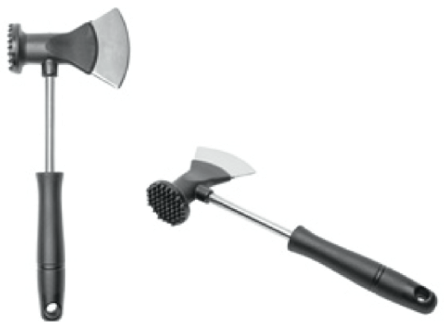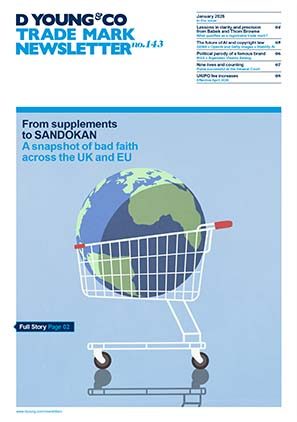Look sharp! The importance of robust and objective evidence
A recent request to invalidate a registered community design failed due to the insufficiency of the evidence provided. The decision of the Third Board of Appeal in R 2019/2020-3 Cutelaria Cristema LDA v Francisco do Carmo Silva Mota serves as a helpful reminder of the importance of submitting sound and objective evidence in design invalidity proceedings in order to show prior disclosure of the design invoked.
Brief summary of the facts
Francisco do Carmo Silva Mota is the holder of registered Community design No 7 373 626-0001 filed on 10 December 2019 and represented by the images below in relation to “axes, hatchets, mincer tools and chopping knives”.

On 30 January 2020, Cutelarias Cristema, LDA filed an application for a declaration of invalidity of the registered Community design.
By way of reminder, in order to be valid a registered Community design must be novel and have individual character over the prior art.
- A registered Community design is deemed to lack novelty over a prior design if its features differ only in immaterial details.
- A registered Community design is deemed to lack individual character over a prior design if the two designs produce the same overall impression on the informed user. This invalidity action was based on a lack of novelty.
The documents submitted in support of the invalidity application were various invoices issued by the design holder referring to a “meat chopping hatchet” and several declarations made by people from several businesses testifying that the meat chopping hatchet as reproduced in the declarations was for sale on the Portuguese market by the design holder itself and other business entities well before the filing date of the contested registered Community design.
By a decision of 21 September 2020, the invalidity division rejected the application for a declaration of invalidity based on the lack of sound evidence – the evidence submitted was insufficient to prove the disclosure of the hatchets depicted in the declarations.
On 21 October 2020 the invalidity applicant filed an appeal accompanied by the statement of grounds requesting that the contested decision be set aside. In the statement of grounds, the invalidity applicant reiterated that the contested registered Community design lacks novelty and that the contested registered Community design is a well-known cutlery accessory used to chop meat and consists of a shape, lines and contours that were already known to the public before its filing date. In support of its claims, the invalidity applicant submitted photographs from books and catalogues showing hammers used in the 19th century and screenshots from Facebook in 2018 showing hatchets.
The Board of Appeal agreed with the invalidity division that the invoices and declarations evidence was insufficient to prove the disclosure of the prior design to the extent that the design lacked novelty. The invoices were issued for a “meat chopping hatchet” but there was no product image included in the invoice. The supporting declarations were insufficient to establish that the image depicted in the declarations was the same as the product referred to in the invoices. Further, the declarations were in the names of business entities linked to and having a business relationship with the invalidity applicant!
At the appeal stage, the Board of Appeal was critical of the evidence submitted to support the argument that the contested registered Community design’s lines, contours and shape were already known to the public before its filing date. Some of the evidence was undated whilst other evidence concerned new designs which did not form part of the invalidity division’s assessment, and the invalidity applicant had no good reason as to why these prior designs were not relied on to begin with. The late submission of these prior designs was deemed to be due to negligence on the part of the invalidity applicant.
The Board of Appeal concluded that evidence submitted by the invalidity applicant was insufficient to demonstrate the disclosure of a prior design, the appeal was dismissed and the invalidity applicant was ordered to bear the other side’s costs.
Comment
It is established case law that “the onus is on the invalidity applicant to prove the disclosure of the earlier designs”. Case law also tells us that “the disclosure of an earlier design cannot be proved by means of probabilities or suppositions, but must be based on solid and objective evidence that proves that the earlier design was made available to the public”.
This Board of Appeal decision is a useful reminder of the importance of obtaining robust evidence.
In respect of prior designs, sufficient pictorial evidence is needed together with proof that the design was indeed disclosed to the public before the priority date.
Evidence such as witness statements or affidavits should be dated, clearly signed by an identifiable individual and independently written.
